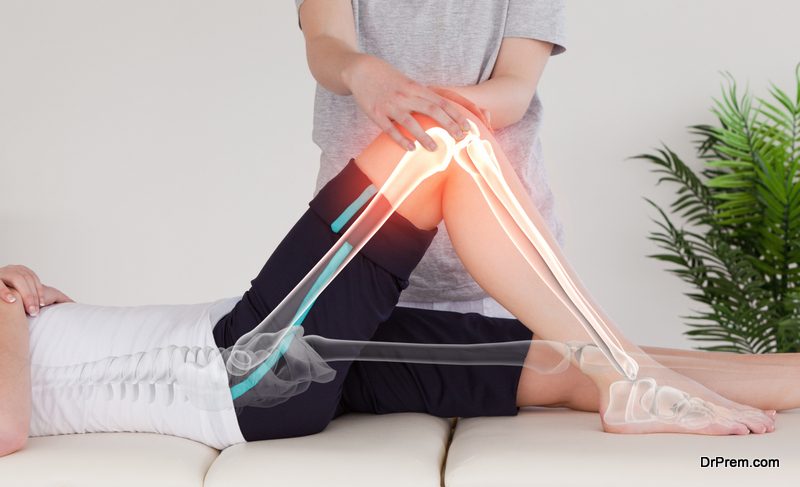If you’re a lover of all things natural, this article is for you. One study showed that seven out of 10 Americans are currently taking at least one prescription medication. Doctors prescribe medicine for all types of conditions from high blood pressure or cholesterol to water retention and arthritis. But if you’re looking for alternative ways of treating these common ailments, you’re in luck! With a little innovation and research, you can find holistic ways of treating common conditions. Keep reading to discover five of the most popular.
1. Chiropractic Care
 When it comes to relieving anything from back and neck pain to headaches and allergies, chiropractic care offers a holistic and beneficial alternative to pain medication. Some people shy away from the chiropractor due to fear. The idea of having your back or neck ‘cracked’ is unsettling for some. But it’s important to note that chiropractors do much more than simply crack your body — and the true healing lies in the purpose of these procedures. Chiropractic care is based on the belief that when the musculoskeletal system is aligned (specifically the spine) then the body is better able to heal itself naturally, without the need for medication or surgery. The alignment of the spine helps reduce pressure on the neck and back, which can reduce pain from strains, herniated discs, and other muscle-related issues. Your neck is also the origin of many types of headaches including migraines and tension headaches. Don’t suffer in silence any longer. Meet with a professionally trained chiropractor who can offer advice, recommendations, and treatment for a pain-free life!
When it comes to relieving anything from back and neck pain to headaches and allergies, chiropractic care offers a holistic and beneficial alternative to pain medication. Some people shy away from the chiropractor due to fear. The idea of having your back or neck ‘cracked’ is unsettling for some. But it’s important to note that chiropractors do much more than simply crack your body — and the true healing lies in the purpose of these procedures. Chiropractic care is based on the belief that when the musculoskeletal system is aligned (specifically the spine) then the body is better able to heal itself naturally, without the need for medication or surgery. The alignment of the spine helps reduce pressure on the neck and back, which can reduce pain from strains, herniated discs, and other muscle-related issues. Your neck is also the origin of many types of headaches including migraines and tension headaches. Don’t suffer in silence any longer. Meet with a professionally trained chiropractor who can offer advice, recommendations, and treatment for a pain-free life!
2. Hypnosis
No, we aren’t talking about the kind of hypnosis you see at a Las Vegas show. And don’t worry, you won’t end up on a stage clucking like a chicken. Hypnosis is a practice that’s been commercialized in the past, but is actually proven to help thousands of people with hundreds of different issues and ailments. Many people turn to hypnosis to treat addictions ranging from alcohol or smoking to weight gain and even illicit drug use. Hypnosis is also said to help treat pain, depression, and anxiety. But how does it work?
Hypnosis is about tapping into your unconscious mind and altering your thoughts, which in-turn alters your behaviors. Patients must enter the hypnosis process with an open mind. The first few minutes of your session include breathing exercises and conversation to help you relax and enter the right state of mind. Once you’re relaxed, the hypnotist will try to capitalize on your altered state of consciousness — you’re awake, but not completely. It’s here that you can improve focus and alter your thoughts, which then translate into your conscious mind. For example, if you’re struggling to quit smoking, hypnosis can help cut cravings and diminish your desire for nicotine.
3. CBD Oil
 The use of CBD oil is on the rise. In fact, 17 states currently have a law in place designed specifically to allow the use of CBD for medicinal reasons. Some of the most common uses for this holistic herb include treating insomnia, chronic pain, and anxiety. CBD is one of over 100 cannabinoids found in the marijuana plant. But the good thing is, users won’t experience the “high” normally associated with weed. THC is the ingredient in marijuana that causes these psychoactive side effects. When you use CBD in all its forms, you only reap the benefits without the feeling associated with drug use. CBD is especially helpful with anxiety and insomnia due to its ability to help calm your mind and body. CBD interacts with natural cannabinoids in your body and neurotransmitters in the brain, releasing chemicals that help you relax. This is the same way that CBD helps chronic pain sufferers — reducing inflammation and relaxing muscles. CBD comes in many forms from oils and ointments to edibles and even tea! Just be sure to check your state’s local laws before purchasing and using CBD.
The use of CBD oil is on the rise. In fact, 17 states currently have a law in place designed specifically to allow the use of CBD for medicinal reasons. Some of the most common uses for this holistic herb include treating insomnia, chronic pain, and anxiety. CBD is one of over 100 cannabinoids found in the marijuana plant. But the good thing is, users won’t experience the “high” normally associated with weed. THC is the ingredient in marijuana that causes these psychoactive side effects. When you use CBD in all its forms, you only reap the benefits without the feeling associated with drug use. CBD is especially helpful with anxiety and insomnia due to its ability to help calm your mind and body. CBD interacts with natural cannabinoids in your body and neurotransmitters in the brain, releasing chemicals that help you relax. This is the same way that CBD helps chronic pain sufferers — reducing inflammation and relaxing muscles. CBD comes in many forms from oils and ointments to edibles and even tea! Just be sure to check your state’s local laws before purchasing and using CBD.
4. Meditation
Your mind is one of the most powerful tools you have. The phrase “mind over matter” is more accurate than most people realize. Meditation has helped countless people deal with stress, anxiety, pain, and even physical ailments. Meditation is based primarily on a person’s breathing. It’s believed that by controlling your breathing, you can also control your focus and the function of your mind and body. Controlled breathing is one of the best ways to calm your nerves and help reduce stress. As your breaths elongate, your brain waves begin to slow down. Your blood pressure and heart rate also drop to a more calming rhythm. Meditation is considered a practice, which means that you won’t feel the positive effects immediately. On average, it takes between one and two months for you to experience the full benefits of the meditation process. The good news is that it’s something quite simple to work into your schedule. Many people set aside 10 or 15 minutes each morning to meditate. This sets a positive, more focused tone for the rest of your day.
5. Acupuncture
 Similar to chiropractic care, some people are apprehensive to try acupuncture. After all, the idea of countless tiny needles sticking into your body may not sound appealing. But the truth is, the needles are so thin, you barely feel them. The benefits, however, are felt in many ways. The premise of acupuncture is that all people have a life force (Qi) that flows through them. This energy flow travels through channels in the body known as meridians. Each of these meridians is connected to a specific organ in the body. When this flow of energy is interrupted, the body can’t function properly. Acupuncture helps your Qi flow freely. The tiny needles used in acupuncture are said to improve this energy flow. Acupuncture can help conditions ranging from chronic pain and arthritis to infertility and nausea and vomiting.
Similar to chiropractic care, some people are apprehensive to try acupuncture. After all, the idea of countless tiny needles sticking into your body may not sound appealing. But the truth is, the needles are so thin, you barely feel them. The benefits, however, are felt in many ways. The premise of acupuncture is that all people have a life force (Qi) that flows through them. This energy flow travels through channels in the body known as meridians. Each of these meridians is connected to a specific organ in the body. When this flow of energy is interrupted, the body can’t function properly. Acupuncture helps your Qi flow freely. The tiny needles used in acupuncture are said to improve this energy flow. Acupuncture can help conditions ranging from chronic pain and arthritis to infertility and nausea and vomiting.
The next time you’re suffering from a chronic or acute condition and reach for the medicine cabinet, opt for one of these holistic approaches. Alternative medicine puts the control in your hands and allows you to seek relief without the need for prescription drugs.
Article Submitted By Community Writer




